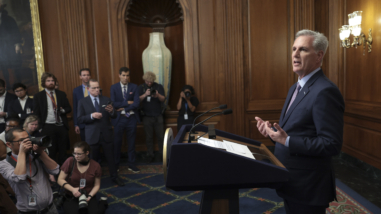There’s a reason predicting the future is so hard: we humans tend to overestimate the extent to which it will look like the present, only with better gadgets. This point was brought home to me at a recent grantee event, when I had a chance to speak with a member of the House of Representatives, a savvy Democrat who has represented a rust belt district for more than three decades. I asked him what the biggest change in Congress that he has witnessed over the years was. He thought about it for a moment and said it was that the Democratic caucus no longer had any conservative southerners. When he had arrived in Congress they were most notable bloc in the party. Now, as National Journal recently pointed out, in the 114th Congress there is not a single white Democrat serving in either the House or Senate from South Carolina, Georgia, Alabama, Missisisppi, or Louisiana. The representative shook his head in disbelief as he reflected on this observation: if someone had told him this was how things would end up when he was first elected, he said, “It would have been inconceivable to me!”
His response intrigued me for a few reasons. First, he didn’t lead with the polarization and corresponding decline in institutional comity that most observers of the institution would highlight. But of course the changes he alluded to—the migration of conservative Southerners into the Republican Party, and the growing preeminence of African Americans in the Democratic Party in the South—have been major factors driving polarization, helping to sort American citizens and the legislators representing them into two ideologically coherent and distinct political parties.
Consider just two developments our friends at the Pew Research Center highlighted recently: In the current school year, for the first time ever, American public schools (grades K-12) are “majority-minority”—i.e., white school children have become and will remain a national minority. And in another demographic sea change, in 2015 millennials will overtake baby boomers as the largest generational cohort in the country. Of course these changes, and the political dynamics they are already setting in motion, could worsen our current polarized state. But they could also work to ameliorate it. We shouldn’t lose sight of—or hope in—the latter possibility.




